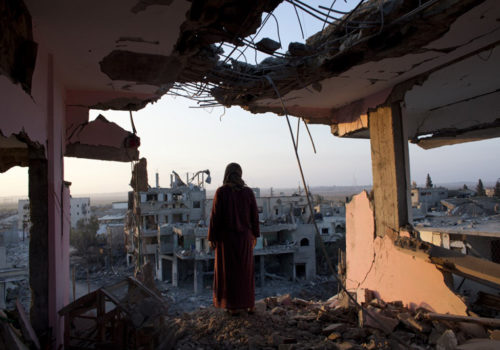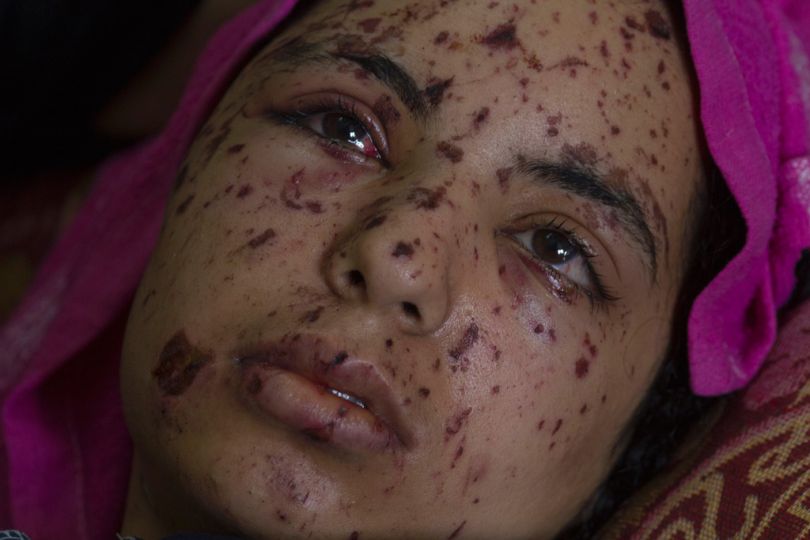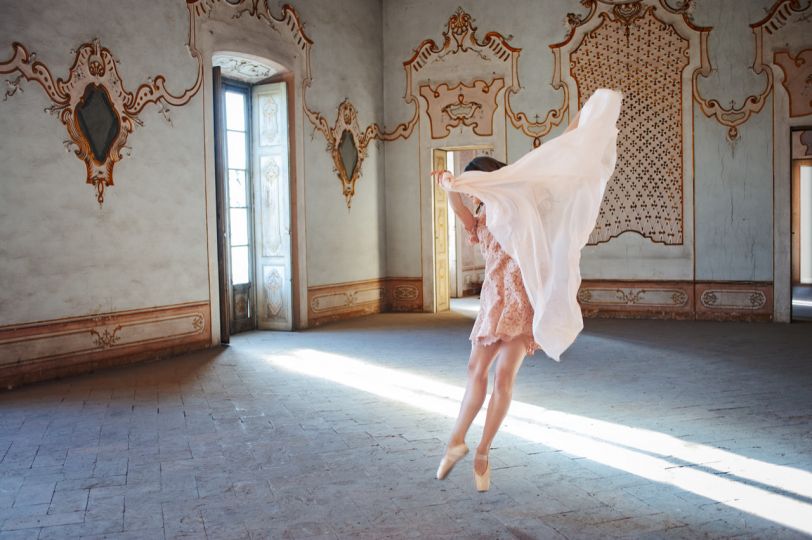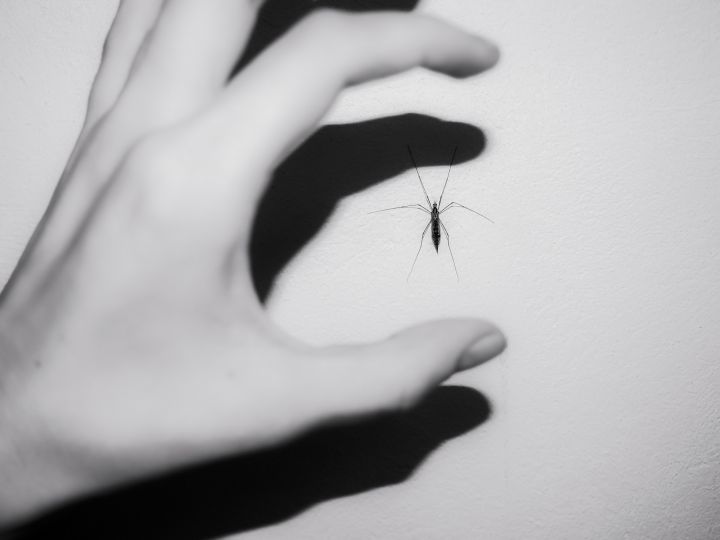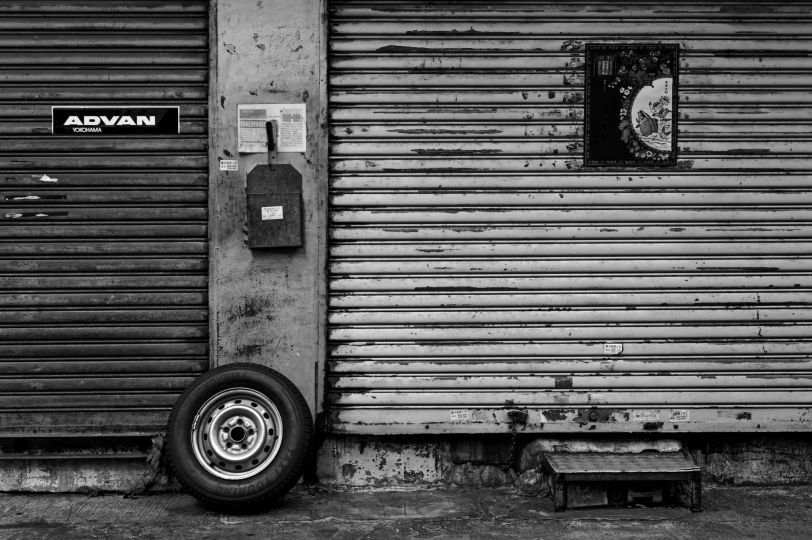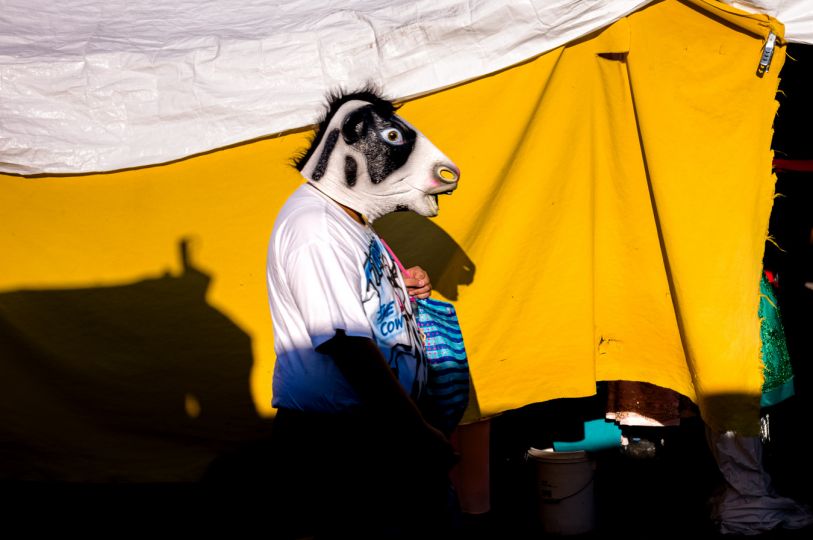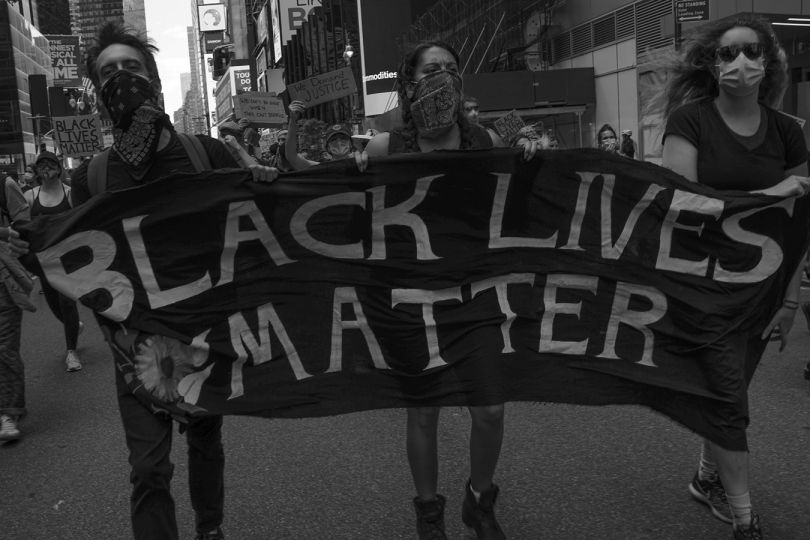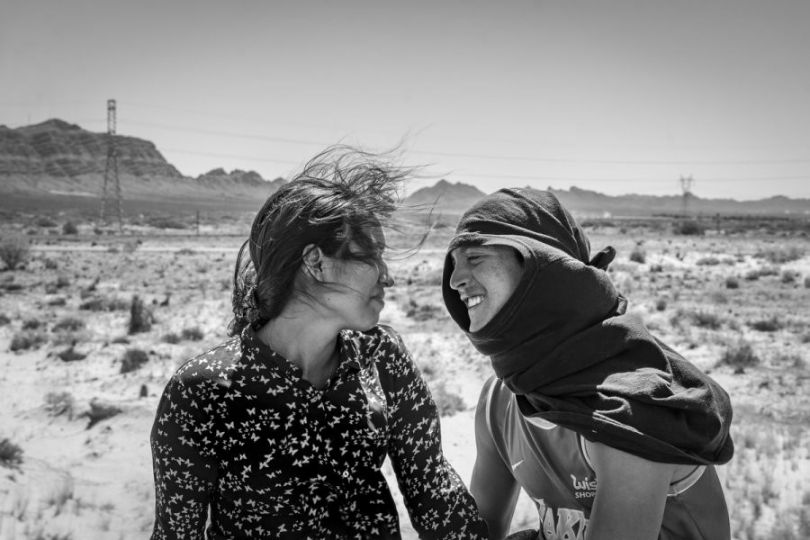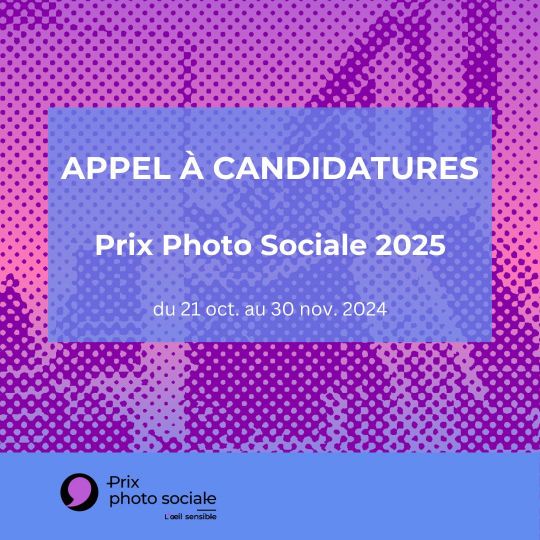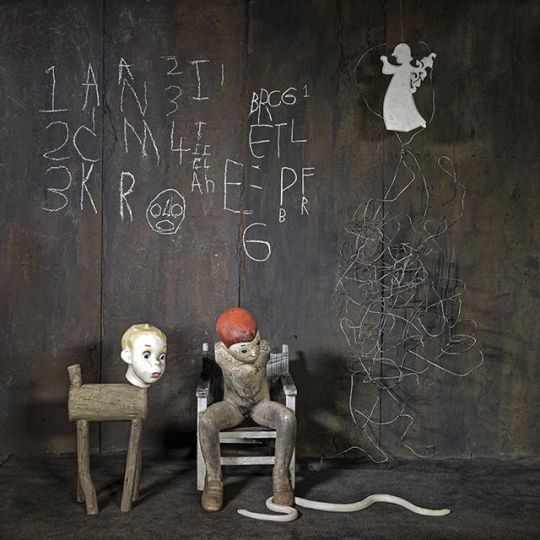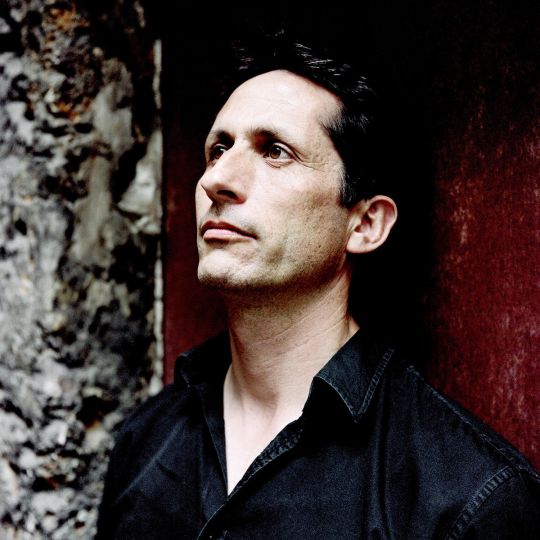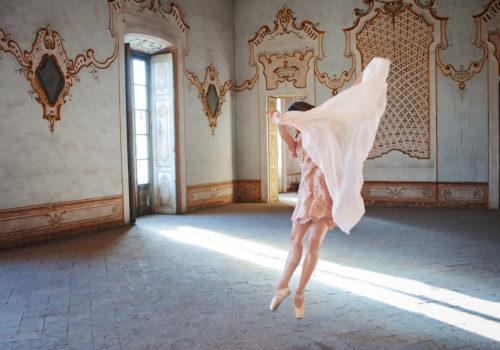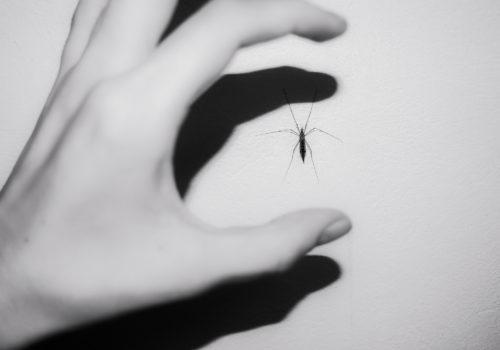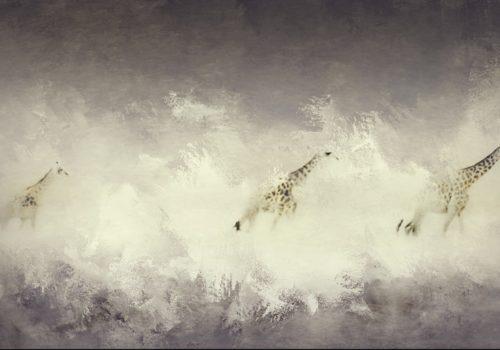Gaza City, August 2014, Palestinian Hidya Atash watches as day dawns over the ruins of her district of Shujayea, destroyed by Tsahal bombings as part of the “Operation Protective Edge” in response to rocket fire on Israel by Hamas.
Bayeux, October 2015 – More than 1,500 people – all Hidya for the evening – greet Heidi Levine with a round of applause as she goes up on stage at the 22nd Bayeux Calvados war reporters awards ceremony. She had come for the Nikon Photo Prize and was close to tears as she picked it up, then emotions peaked later when she came back on stage for the second award for the same reportage, the Public’s Prize sponsored by the French development agency, AFD. The applause and the “bravos” were even louder during the standing ovation for one of the most tireless and talented of photojournalists.
Levine has worked in Tel-Aviv for SIPA Press over the last 25 years and each of these images, produced at the very heart of the Israeli–Palestinian conflict, bears the mark of an ongoing engagement free from any bias. Jewish-born and Palestinian at heart, neither side can dispute her professional rigour. Heidi Levine’s careful, uncompromising eye seeks out a vital visual commentary on this highly sensitive theatre of war. The empathy is never overdone. The public at Bayeux agreed with the professionals’ verdict before these images from Gaza that find their rightful place here, edited in a remarkably thoughtful manner. Heidi Levine’s images are illuminated with simplicity, like the face of Rawya Abu Jom’a, marked with shrapnel splinters and wet with tears and blood, plunged into the very depths of sorrow. Her reply is always restrained when faced with the persistent question about war reporters: how do you show the horror without stirring up a burning need to put an end to that vision? How do you prevent aesthetic concerns serving as an alibi and a magnifier of compassion?
The question is echoed in all the award categories and sometimes willingly debated, just like the necessary cohabitation between field reporting and investigation. To top things off, the written press trophy awarded by the Département du Calvados went to the reportage of Der Spiegel’s Christoph Reute, “Haji Bakr, the brain of terror”*.
“Seeing, understanding, taking action,” are the keywords underpinning the Bayeux prize explained Jean-Léonce Dupon, Chairman of the Calvados council. Recalling the words of Riss, Charlie Hebdo survivor, in front of the reporters’ memorial stone: “the war came to us”. These reporters are more present than ever with every year that goes by, working on issues and in areas that are increasingly difficult to access. Patrick Gomont, mayor of Bayeux recalled the fact that 720 journalists have been killed in ten years. Add to that the thousands of victims in all the ongoing conflicts across the world, in Syria, Iraq and on the murderous roads taken by “migrants” to Europe. “Let us keep the memory of their absence always,” pleaded Jean-Léonce Dupon.
Defending democracy, the duty to inform and the right to information – threatened like never before. A battle that is not exclusive to RSF but an opportunity for everyone. “Thank you, Bayeux,” wrote Jean-Pierre Perrin in “Libération”* on September 12th. How right he was.

